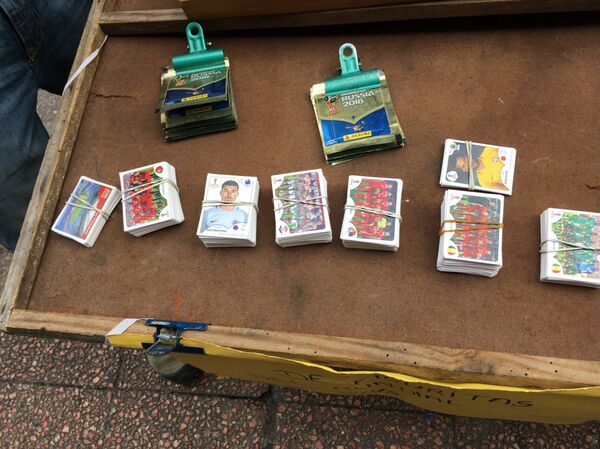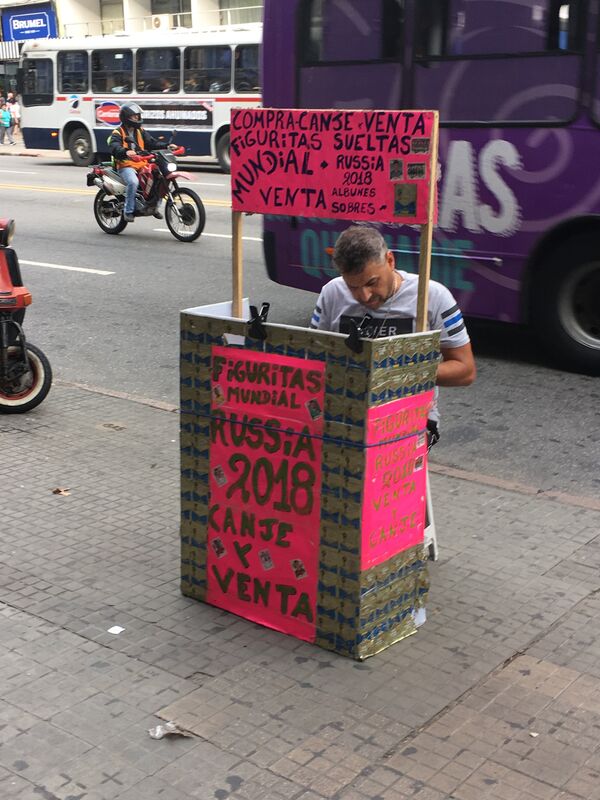If a foreigner walks along July 18 Avenue, Montevideo's high street, they'll be sure to notice kiosks selling and trading World Cup players' stickers. Adults can be seen haggling over stickers with the passion of children at recess.

The scene repeats itself every four years, about 100 days prior to the start of each World Cup. In fact, Uruguay is among the countries with the highest per capita sales of stickers and with the highest rate of completed albums, explains Nicolás Lerner, the commercial manager of Panini — an Italian company that has been making World Cup stickers since 1970.
"The FIFA World Cup album isn't a children's game. We can see collectors who are five years old and up. It's not just men who collect stickers: 30-40% are women. They include grandmothers and grandfathers. Those who used to be ashamed to say that they're buying stickers now say it with total pride," Lerner said.
"I sell and I don't complain, but I have no idea why it is so fierce. There are studies that appear in the news and say that compared to Spain or Italy, even if they have more people, we consume more stickers. It's all about fanaticism" — Sergio Vázquez, who runs a kiosk in downtown Montevideo, says.
For his part, Panini's manager points out that the albums' theme unites people as it "cuts across the whole of society", since "there's no distinction of socioeconomic level, nor of gender or of age."

Every time Uruguay plays football, even in a friendly, non-competitive match, the country is paralyzed. Public offices see their operation distorted. Some shops modify their opening hours and traffic collapses with people who want to get home to watch the game.
Moreover there's a hobby of collecting stickers and other little things with sportsmen on them. The custom dates back to the late 19th century, when the first football players' images came in cigarette boxes imported from Argentina or England, says Lerner.

Tobacconists had fierce competition through this marketing strategy, but at a certain point they stopped putting the cards into cigarette boxes. There they moved to the candy boxes, especially chocolates. And then they were resold at the local stalls.
"Here in Uruguay about 700 albums were seen, without counting all the collections of stickers that do not have albums, more than 150 of which are related to football" — Panini's manager says.
The first World Cup album was that of Mexico 1970. However, the first official album to come to Uruguay was that of France 1998. The company's commercial strategy in Uruguay was based on reaching all parts of the country, with more than 19,000 sales outlets. It may be reached through an alliance with a company that distributes alfajores, a popular Southern American treat.
"It's a myth that's about thirty or forty years old. I was talking to collectors to learn where this urban legend came from. They say it's from the 50's and 70's. The locals made their own stickers and sold them with trucks in the neighborhoods. Everything was homemade: the sheets were cut by hand as well as the envelopes," Lerner says.

In that process, they removed a sticker from each sheet and that's why "it was very difficult to complete an album; only one in 2,000 or 3,000 people could do it". According to Panini, this strategy is at odds with the current one. Today, the printing process occurs in equal quantities and the stickers are enveloped at random.
"For us, the key is that the album should be completed: the more satisfied customers we have, the better the business is. Otherwise the process will encounter frustrations" — he says.
A university study was carried out by the University of Geneva in 2010. A group of mathematicians hypothesized a possible shortage of certain Panini's stickers but this theory has been discredited.

According to Sergio Vázquez, he opened more than 1,500 envelopes and "never" saw the "00" number. Instead, he has at least 20 Lionel Messi cards.
Bernardi also agrees with that. At 2014 Brazil World Cup, he completed "all countries", except the one that cost him the most, both on this and other occasions: Uruguay.



